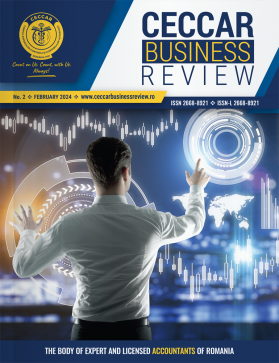
Comparative Analysis Regarding the Recognition and Evaluation of Property, Plant and Equipment – IAS 16 vs. OMPF No. 1802/2014
Number 5, May 2021 » Financial accounting and reporting
Abstract: Property, plant and equipment is present in any entity, regardless if it is a private or a state entity, their main objective being to provide benefits to the company. The right classification, depending on the company’s line of business and the purpose for their use, is very important because it determines the applicable accounting treatment. The efficiency regarding the way these assets are recognized brings excess value to the entity, with a direct impact on the financial statements. The accountant’s professional judgement used in choosing the accounting policies in order to ensure that those are the most relevant and that the accounting for is correct involves exigency and rigorous research, for a correct final result and a transparent image of the firm. Alternation of the accounting policies, as well as the alternation of the input values of property, plant and equipment can significantly influence the values recorded in the financial statements, as well as the financial position and performance.
The aim of this article is to highlight the main aspects related to the recognition and evaluation of property, plant and equipment according to the moment they enter the entity. Therefore, at the end of this research we will know the applicable accounting treatments as well as the main differences between the IAS 16 Property, Plant and Equipment and the Order of the Minister of Public Finance No. 1802/2014 for the approval of the Accounting regulations regarding the individual annual financial statements and consolidated annual financial statements, as subsequently amended and supplemented.
The aim of this article is to highlight the main aspects related to the recognition and evaluation of property, plant and equipment according to the moment they enter the entity. Therefore, at the end of this research we will know the applicable accounting treatments as well as the main differences between the IAS 16 Property, Plant and Equipment and the Order of the Minister of Public Finance No. 1802/2014 for the approval of the Accounting regulations regarding the individual annual financial statements and consolidated annual financial statements, as subsequently amended and supplemented.
Keywords:
IAS 16; OMPF No. 1802/2014; property; plant and equipment; cost; evaluation; input value; fair value
Classification JEL: M41, M48 | Pages: 63-72
Statistics:
abstract views 246 |
PDF downloads 367 |
PDF views 127



